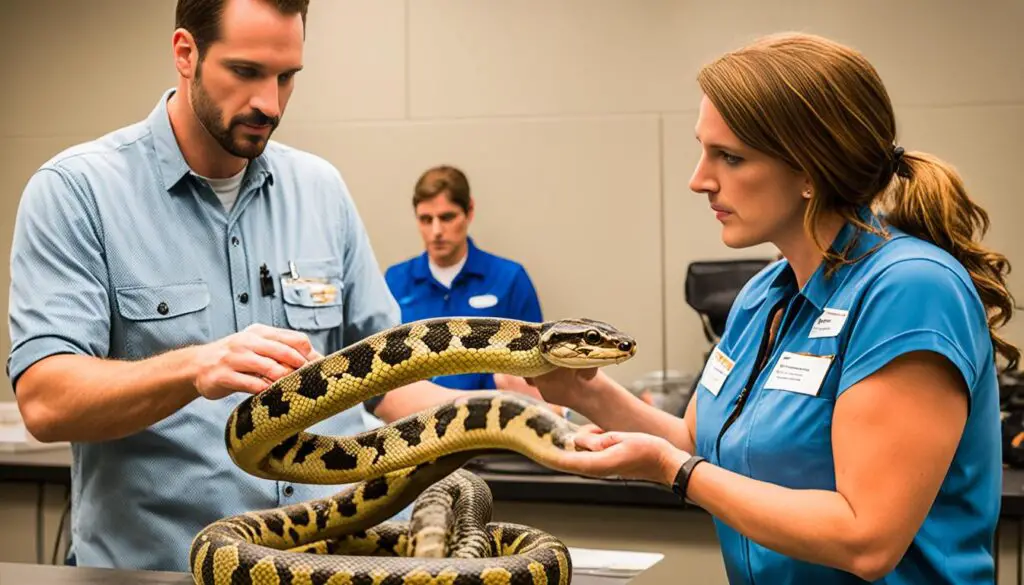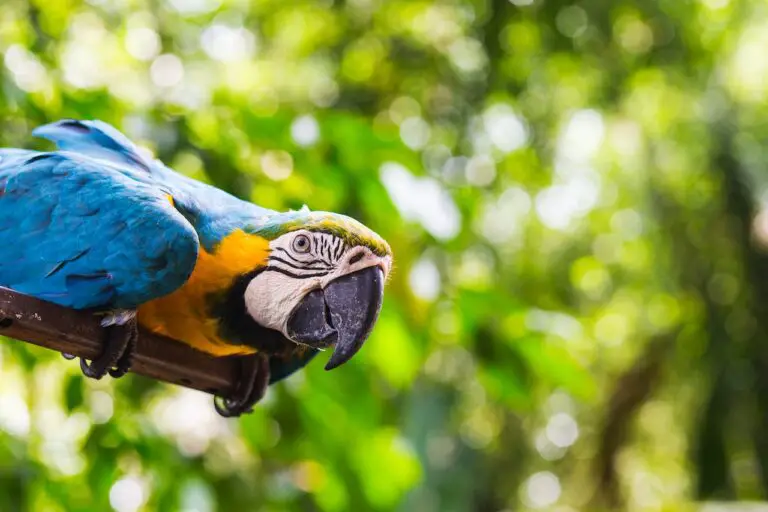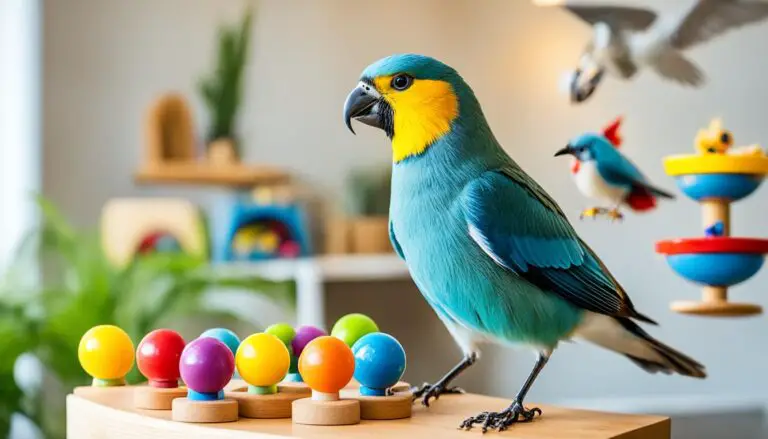Reptile Training for Beginners: Tips & Tricks
Did you know reptiles can remember you, just like dogs and cats do? This amazing fact shows they can form deep bonds. If you’re starting to train your reptile, this guide has helpful tips and techniques.
Reptiles need a different approach compared to other pets. This guide is for new owners who want to train their reptile right. The key is being patient and consistent to build a strong connection with your pet.
Key Takeaways:
- Cultivate a relationship through consistent and positive interactions.
- Understand your reptile’s unique needs and behavioral patterns.
- Utilize simple reptile training tips to start off smoothly.
- Patience and regular handling are crucial for building trust.
- Create an optimal environment for easy and effective training.
Understanding Your Reptile’s Unique Behavior
It’s crucial to understand how your reptile behaves to train them well. Every species has its own way of acting with its space and people. To teach them well, you first need to learn what they like and how they usually behave.
Recognizing Behavioral Patterns
Watching what your reptile does helps you see if they’re happy and healthy. Things like how they lay in the sun, when they eat, and how they react to changes say a lot. If you pay close attention to these actions, you’ll get better at training your reptile in a way that suits them.
Identifying Likes and Dislikes
Knowing what makes your reptile happy or not can make training much better. They might have favorite foods, ways to play, or places to hide. By trying different things, you can work out what they love or find stressful. This helps you improve how you train them, step by step.
| Behavioral Trait | Indicator | Training Insight |
|---|---|---|
| Basking | Spending time under heat lamps | Ensure adequate heat sources for comfort |
| Feeding Response | Active during feeding | Utilize feeding times to build trust |
| Retreating | Hiding in shelters frequently | Introduce handling slowly to reduce stress |
Creating a Bond with Your Reptile
Creating a strong bond with your reptile is a vital part of owning one. Making your scaly friend feel safe and happy needs patience and care. Handle them gently and use treats they really love.

Building Trust Through Consistent Handling
Getting a reptile to trust you starts with regular, gentle handling. Spend time with your pet every day. This helps them get used to you and see you as a friend.
Handling them often lets them know you’re a safe person. It’s key for a good relationship right from the start.
Utilizing High-Value Treats
Use special treats to make handling time better. Find out what your reptile enjoys most and keep it for these times. It might be a piece of fruit or an insect they like.
By using these treats, you help them like being handled more. It works for all kinds of reptiles and makes training fun.
Monitoring Stress and Anxiety Signs
Keep an eye on how your reptile acts. Signs of stress can include hissing, biting, or trying to get away. If you see these, change how you handle them.
It’s important to know when to stop. Always watch their reactions and adjust. This makes sure they stay happy and you both build a strong bond.
Setting Up the Optimal Environment
Making your reptile feel at home is key to basic reptile care. The right environment can make your reptile feel safe and trust you more. This is vital for their well-being.
Arranging Temporary Enclosures
In the start, creating a small, easy-to-use space is a good idea. This area should not have too many places to hide. It encourages your reptile to get used to you. It also makes it easier for you to observe and interact with them gently.
Organizing the Habitat for Easy Handling
Keeping the home clean and set up well helps your reptile stay calm. Make sure they have a safe spot but can still be reached easily. This balance helps build trust and makes training easier. It’s all part of easy reptile training methods.
| Temporary Enclosures | Organized Habitat |
|---|---|
| Minimal hiding spots | Areas for security and accessibility |
| Easy interaction and observation | Reduced stress during handling |
| Facilitates initial training | Encourages trust-building |
Catching and Handling Techniques
Learning how to handle reptiles is key to a calm experience. It helps both you and your pet stay relaxed. We’ll look at how to capture safely and handle with care, leading to positive moments.
Perfect Your Capturing Technique
To capture a reptile, use a flat hand method to avoid harm. Place your hand gently under the reptile. Do this slowly and smoothly. This technique is crucial for safe and calm handling.

Ensuring Minimal Stress During Handling
Keeping handling stress low is important. Always handle your reptile in a quiet space. Stay away from sudden moves and loud sounds. Gradual exposure to handling also helps reduce fear. This makes handling more pleasant for both of you.
Creating a Calm Experience
To create a relaxed atmosphere for your reptile, use a gentle approach. Take regular breaks from handling. This lets the reptile rest and feel safe. By following these steps, your reptile will enjoy your company without stress.
These techniques are essential for a happy and stress-free bond with your reptile friend.
Reptile Training for Beginners
Starting reptile training is a path full of rewards for both you and your pet. A good beginner reptile training guide shows the value of being patient and using the same methods every day. Always begin with basic reptile training tips to make things easier. And remember, start with simple actions and celebrate good deeds.
So, for those wondering how to train your reptile, remember to be steady. Regular, friendly actions build the trust that is needed. Doing things again and again helps your reptile feel at home and ready to learn.
| Training Phase | Key Actions | Expected Outcomes |
|---|---|---|
| Initial Acquaintance | Gentle Handling | Reduced Fear |
| Positive Reinforcement | Offering Treats | Association of Treats with Good Behavior |
| Gradual Interaction | Consistent Sessions | Developing Trust |
Using a solid plan from the beginner reptile training guide and the basic reptile training tips is key. Focusing on slowly growing closer and building a bond is very important. It shows you how to train your reptile best.
Introducing Your Reptile to New Experiences
Teaching reptiles new things is a big step in their training. Start by showing them different parts of your home slowly. This helps them feel safer and less stressed.
Gradual Exposure to Different Areas
Choose a quiet spot for your reptile to begin. Then, slowly let them check out more places. This approach helps them feel at ease in new spots without getting too scared. Regularly seeing new places will boost their self-assurance and make them feel safe.
Developing Confidence with Challenges
Show your reptile new things with fun, easy tasks. Try out small mazes or simple obstacle courses. These activities keep their mind sharp and build their bravery. With a routine that includes these tasks, your reptile will learn to like new experiences.
Consistency and Patience in Training
Learning about step-by-step reptile training for beginners is all about dedication and patience. Remember, training takes time. It’s best to go step by step, reinforcing the behaviors you want.
Reptiles need time to learn. Be patient with them. Make sure each training session helps them see that being around people is good.
“Consistency is the key. Ensuring that every interaction is positive can significantly improve your reptile’s ability to learn and adapt.” — Expert Herpetologist
Make training part of your daily life. Set some time for it every day. Here’s how to keep it up:
- Daily Routine: Integrate training into everyday activities to promote familiarity and reduce stress.
- Repetition: Employ the same techniques consistently to reinforce learning.
- Positive Reinforcement: Reward your reptile with treats or gentle handling following successful displays of desired behaviors.
Training your reptile takes time and offers many benefits. It helps you both communicate better and strengthens your bond. This careful and consistent training is the key to more advanced techniques later on.
Conclusion
Starting out with reptile training might feel tough for beginners. These creatures are unique. But if you learn how they behave and build trust through regular contact and tasty snacks, this journey becomes highly fulfilling. Easy training techniques make things smoother for both the reptile and the person.
It’s key to set up a home for your reptile that reduces stress. Arrange their living space for easy handling and learn to pick them up without causing distress.
Also, introduce new things step by step. This approach helps your pet get used to change and become more self-assured.
Regular training and being patient are vital. Take it one step at a time, celebrating each success. This way, your reptile learns to like you. Using these simple tips, new reptile owners can quickly build a close and positive bond with their pets.
FAQ
What are some simple reptile training tips for beginners?
How can I recognize my reptile’s behavior patterns?
What are some beginner reptile care guidelines?
How do I arrange an optimal environment for my reptile?
What is the best way to handle my reptile to ensure minimal stress?
How can I introduce my reptile to new experiences?
Why are consistency and patience important in reptile training?
Source Links
- https://www.animalcareunlimited.com/blog/exotic-pet-training-and-socialization-tips-for-building-a-strong-bond-with-your-bird-reptile-or-small-mammal/
- https://www.saferpets.co.uk/how-train-your-pet-lizard.html
- https://www.reptileforums.co.uk/threads/tap-training-snakes.662487/
Peter Stones is the founder of Exotic Pets Place, the leading online resource for exotic pet care information.
With over 10 years of hands-on exotic pet ownership experience, he is deeply passionate about sharing his expertise to help others properly care for their unusual pets.
When he's not writing extensively researched articles or connecting with fellow exotic pet enthusiasts worldwide, you can find Peter at home tending to his own beloved menagerie of exotic animals.







![How to Train Your Exotic Pet to Use a Litter Box [+ Practical Tips], a fluffy puppy in a box](https://exoticpetsplace.com/wp-content/uploads/2023/05/How-to-Train-Your-Exotic-Pet-to-Use-a-Litter-Box-Practical-Tips-a-fluffy-puppy-in-a-box-768x512.jpg)